Animalia

Moose
Alces alces

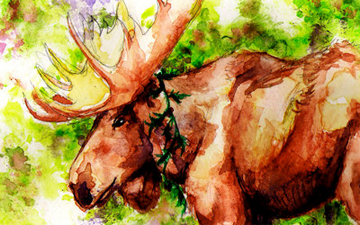
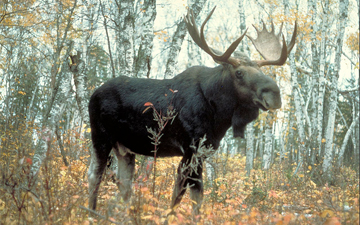
5 POINTS
Play: Alces alces has a MOVE of 2.
Fact: In Europe, a moose is known as a European Elk.
cold, cool
Graphic by Catherine Fielderl-h4x3d.deviantart.com/
Photo by USDA Forest Serviceen.wikipedia.org/wiki/File:Moose_superior.jpg
The moose (North America) or European elk (Europe) (Alces alces) is the largest extant species in the deer family. Moose are distinguished by the palmate antlers of the males; other members of the family have antlers with a “twig-like” configuration. Moose typically inhabit boreal and mixed deciduous forests of the Northern Hemisphere in temperate to […] read more

Bohemian Waxwing
Bombycilla garrulus

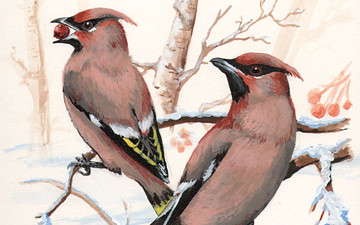
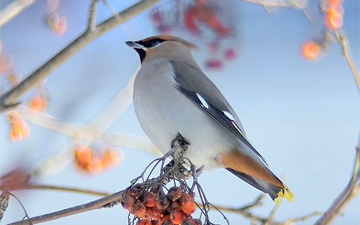
5 POINTS
• Bombycilla garrulus has a FLIGHT of 2.
Cool, Warm
Graphic by Akela Takaakelataka.deviantart.com/
Photo by Andronov Igor Nikolaevichen.wikipedia.org/wiki/File:Sviristel24feb2007_01_crf.jpg
The Bohemian Waxwing (Bombycilla garrulus) is a member of the waxwing family of passerines. A sleek bird, 18–21 cm long with a pointed crest, it travels in large, nomadic groups with a strong, direct flight. It breeds in coniferous forests throughout the most northern parts of Europe, Asia and western North America. As the Cedar Waxwing […] read more

Long-eared Jerboa
Euchoreutes naso

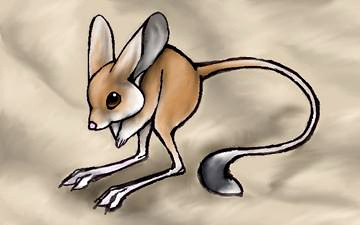
Sorry, there is no photo available. If you have one, please submit
here
.
6 POINTS • Euchoreutes naso has a MOVE of 2. Very little is known about Euchoreutes naso.
Cool, Warm, Hot
Graphic by E. Harlowphylogame.org
The Long-eared Jerboa, Euchoreutes naso,[2] is a nocturnal mouse-like rodent with a long tail, long hind legs for jumping, and exceptionally large ears. It is distinct enough that authorities consider it to be the only member of both its genus,Euchoreutes, and subfamily, Euchoreutinae. It has been reported in China and in ten localities in desert […] read more

White-fronted Amazon
Amazona albifrons

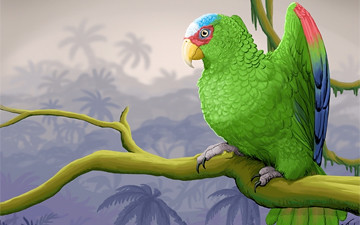
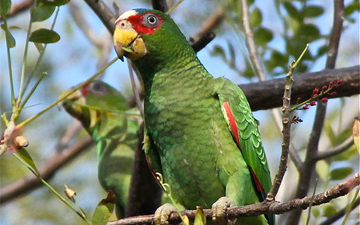
6 POINTS
• Amazona albifrons has a FLIGHT of 2.
Amazona albifrons has a long potential life span, usually around 40 years.
Warm, Hot
Graphic by Akela Takaakelataka.deviantart.com/
Photo by Steve Jurvetsonen.wikipedia.org/wiki/File:Amazona_albifrons_-Costa_Rica-8.jpg
The White-fronted Amazon, at about 25 cm (10 in) long, is the smallest of the Amazon parrots. This species is named for the bright white patch of feathers on their foreheads, although the amount of white varies from individual to individual. They have mostly green plumage with some blue colouring on their outspread wings. They have bright red […] read more

Hoatzin
Ophisthocomus hoazin

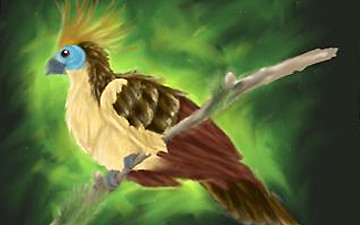
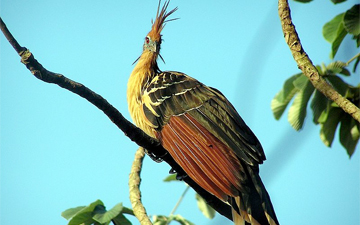
6 POINTS
• Ophisthocomus hoazin has a FLIGHT of 2.
Ophisthocomus hoazin is the national bird of Guyana.
Warm, Hot
Graphic by E. Harlowphylogame.org
Photo by Linda De Volderen.wikipedia.org/wiki/File:Opisthocomus_hoazin.jpg
The Hoatzin (Opisthocomus hoazin), also known as the Hoactzin, Stinkbird, or Canje “Pheasant”, is an unusual species of tropical bird found in swamps, riverine forest and mangrove of the Amazon and the Orinoco delta in South America. It is the only member of the genus Opisthocomus (Ancient Greek: wearing long hair behind, referring to its large crest),[2] which in turn is the only extant genus in the family Opisthocomidae. […] read more

White-nosed Coati
Nasua narica

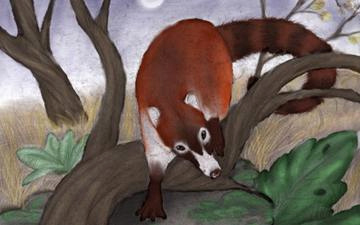
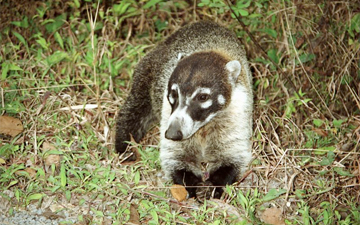
4 POINTS
• Nasua narica has a MOVE of 2. If coatis are provoked or they sense danger, they can become fierce fighters, using their sharp teeth, strong jaws, and fast scratching paws.
Cool, Warm
Graphic by Heather E. Harlowforbidding.deviantart.com/
Photo by Linda de Voldercommons.wikimedia.org/wiki/File:Coati_1.jpg
The White-nosed Coati (Nasua narica), also known as the Pizote or Antoon, is a species of coati and a member of theProcyonidae (raccoon family). In Mexico, it is often referred to as Tejón, which otherwise means badger. White-nosed Coatis inhabit wooded areas (dry and moist forests) of the Americas. They are found at any altitude from sea level to 3,500 m (11,500 ft), and from as […] read more